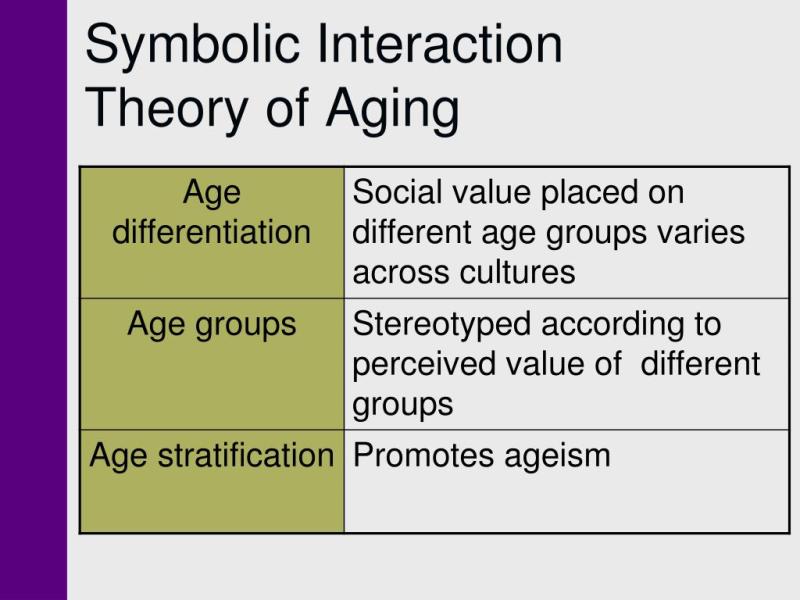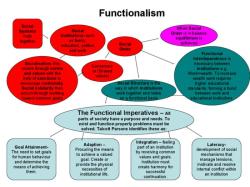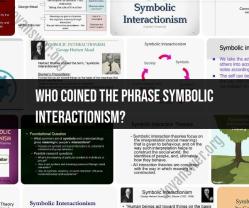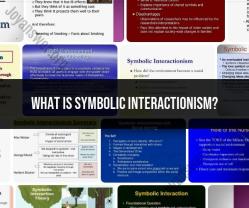Who founded Symbolic Interaction?
Symbolic Interactionism is a sociological perspective that emerged in the early 20th century, and it was not founded by a single individual. Instead, it evolved through the contributions of several influential figures who played key roles in shaping its theoretical foundations. While there is no single founder, the early development of symbolic interactionism is closely associated with the following pioneers:
George Herbert Mead (1863–1931):
- Often regarded as one of the primary contributors to symbolic interactionism.
- Developed key concepts such as the self, the "I" and the "Me," and the role of symbols and language in the socialization process.
- Emphasized the importance of social interactions and the interpretive nature of human communication.
Charles Horton Cooley (1864–1929):
- Coined the term "looking glass self" to describe the process through which individuals develop their self-concept based on social interactions and feedback from others.
- Contributed to the understanding of how social groups and communities shape individual identity.
Herbert Blumer (1900–1987):
- Coined the term "symbolic interactionism" to describe the theoretical perspective that focuses on the role of symbols and interactions in the construction of meaning.
- Elaborated on Mead's ideas and developed symbolic interactionism as a distinct sociological approach.
- Emphasized the significance of the ongoing interpretive process in social interactions.
While Mead, Cooley, and Blumer are often highlighted as key figures in the early development of symbolic interactionism, it's important to note that the perspective continued to evolve with contributions from other scholars over time. Symbolic interactionism has become a diverse and dynamic field, with researchers exploring various aspects of human behavior, communication, and social interaction. The collaborative efforts of these early pioneers laid the groundwork for a perspective that has had a lasting impact on the study of sociology and related disciplines.
Unveiling the Origins and Impact of Symbolic Interactionism:
Tracing the roots of Symbolic Interactionism reveals a vibrant tapestry of intellectual influences and pioneers. Let's unravel its development and ongoing significance:
1. Founding Figures:
While no single individual "founded" Symbolic Interactionism, it emerged through the collaborative efforts of several key figures:
- George Herbert Mead: A philosopher and sociologist, Mead laid the groundwork with his concept of the self and symbolic communication, heavily influencing early formulations of the theory.
- Herbert Blumer: An American sociologist, Blumer coined the term "symbolic interactionism" and played a crucial role in systematizing and popularizing the theory.
- Charles Horton Cooley: A sociologist who proposed the "looking-glass self" concept, emphasizing the role of social interaction in shaping self-identity.
- Erving Goffman: A sociologist who explored the concept of "dramaturgy" and the presentation of self in everyday life, adding important insights to the understanding of symbolic interaction in social settings.
2. Historical and Intellectual Roots:
Several intellectual streams contributed to the development of Symbolic Interactionism:
- Pragmatism: The philosophical concept of meaning arising through interaction with the environment and language.
- Phenomenology: The study of subjective experience and how individuals interpret the world around them.
- Microscopic Sociology: Focusing on the analysis of everyday interactions and their impact on social processes.
3. Influence on Social Interactions and Relationships:
Symbolic Interactionism offers a unique lens for understanding:
- The construction of meaning: How individuals interpret symbols and actions within social contexts.
- The formation of the self: How social interactions shape individual identities and self-perceptions.
- The dynamics of power and inequality: How symbolic resources and interpretations can create and reinforce social hierarchies.
- The negotiation of social order: How individuals and groups establish and maintain shared understandings of norms and expectations.
4. Key Contributors and Evolution:
Beyond the founding figures, numerous scholars have contributed to and expanded the theory:
- Harold Garfinkel: Pioneered ethnomethodology, focusing on how individuals make sense of social situations.
- Anselm Strauss: Developed grounded theory, a qualitative research method informed by symbolic interactionism principles.
- Howard Becker: Studied deviance and social control from a symbolic interactionist perspective.
- Judith Butler: Explored gender and identity through a performative lens, aligning with symbolic interactionist concepts.
The theory continues to evolve through ongoing research, critiques, and applications in various social contexts.
5. Shaping Sociological Research and Understanding:
Symbolic Interactionism continues to shape sociological research:
- Guiding qualitative research methods: Informs studies of everyday life, social movements, and subcultures.
- Offering rich insights into diverse social phenomena: From education and healthcare to social media and politics.
- Emphasizing the subjective and interpretive nature of social life: Encourages researchers to consider the perspectives and experiences of individuals within their social contexts.
Remember:
Symbolic Interactionism isn't a static doctrine but a dynamic and vibrant intellectual tradition. Understanding its historical roots, key figures, and ongoing evolution allows us to appreciate its enduring impact on sociological research and our understanding of the complex tapestry of human interactions and relationships.
So, the next time you encounter the term "symbolic interactionism," remember the collaborative minds and ongoing dialogues that have shaped this influential perspective on the human experience.












